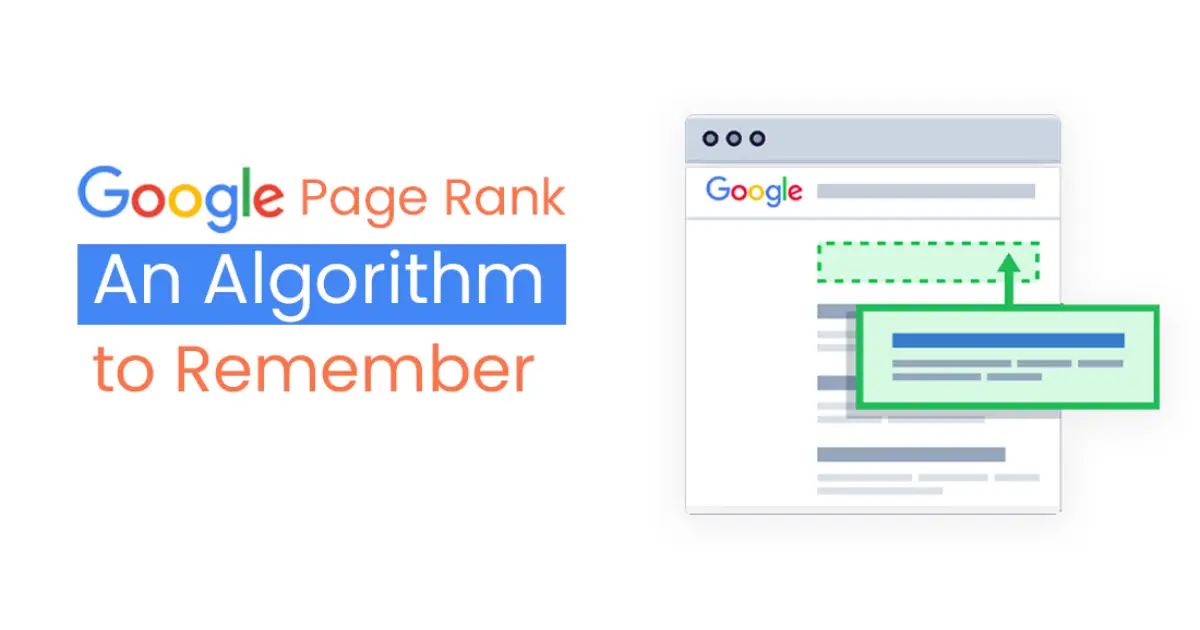
If you were to ask anyone who has worked in the field of SEO about the one metric that revolutionised the whole Search engine optimization, the answer would be a resounding ‘Google page rank’. In early 2000, Google introduced the google toolbar that would show the page rank of a website. In a time where people were struggling for ranking, the page rank metric became quite handy. It became so popular that people started exploiting the metric until google had to finally shut it down in 2016. Why was Google forced to remove one of the most elegant metrics? Let’s find out.
What is Google page rank?
It’s an algorithm that was used to rank web pages in the SERPs (Search Engine Result Pages). It was then and even now considered one of the important factors driving the importance of website pages. Although it’s not the only factor, it still does matter.
How is page rank calculated?
Google page rank was developed by Larry Page and Sergey Brin in 1997. They aimed to improve the quality of web searches.
The idea behind it:
The idea for page rank was derived from the way scientists used to cite research papers. A paper referred to by many can be considered as an authoritative paper. The same concept was applied and a site having more link juice was considered more important.
Factors influencing page rank:
–Inbound links-Outbound links -Page rank of each link
So in short Google didn’t just take the number of links attached to a site but the quality of the link was also considered. For example, a link from a high Page rank website was given more weight than a link from Low Page Rank.
The Math Behind
Consider Webpage (A) page rank is getting links from Page (B) & (C). In the below-given formula, PR(A) is PageRank of Page (A), similarly PR(B) & PR(C) are for Pages (B) & (C) Whereas L(B) is the number of outbound links from Page (B) and L(C) is that of Page (C) PR(A) = (1 – d) + d {PR(B)/L(B) + PR(C)/L(C)}
Here “d” is the Damping factor that is the probability of a user clicking a link, usually set to 0.85 The math looks complex, doesn’t it? Simply put, suppose we want to calculate the page rank of (A). And Page (A) has two links, one from page (B) and the other from page (C). Feed-in the information of the respective pages and you will get the page rank for Page (A). Similarly, if P(A) was having links from the “n” number of web pages, then its PageRank will also be decided by the same cumulative calculation mentioned above for Page B & C.
Reason for removal
Until that point in time, no metric can be used by people to measure the ability of a page to be ranked. But with the introduction of Page Rank, increasing the link juice became extremely important. And with people able to quantify the ranking factor, it paved the way for spam. People started selling high PR links Online.
Remedy
Google introduced the no-follow link as an attempt to stop spam indexing. With bloggers able to automatically insert “nofollow” to hyperlinks, to an extent the spamming was stopped. But this also meant stopping the legitimate comments.
Current Scenario
Though Google has removed the page rank, there are many other websites such as Ahref, Moz that have metrics such as UR and PA to give an understanding of the page authority. Since no one knows how google has arrived at the final number, a replica of Google’s page rank will be impossible to recreate. As each of them uses its own algorithm to come up with the final number, it can be used as a reference to get a basic understanding of the authority of the page.
So what can be done to improve page rank?
01. Internal Linking Internal Linking is one of the best methods and the one that does not require much effort. Proper internal links can increase your page ranking.
02. External linking Linking to relevant pages instead of randomly linking to low-quality pages.
03. Backlinks Link building is considered as one of the major factors in improving the page rank. But good care has to be given while building one. Concentrate on creating links from high page authority. You can check the authority from any of the websites and link to those websites showing high page authority.
Conclusion
Yes, Google has removed the page rank, but that doesn’t mean that we have to stop considering the metric. Since the authority of a page depends on several factors, rankings of a page can still be influenced by the basics of google page ranking.